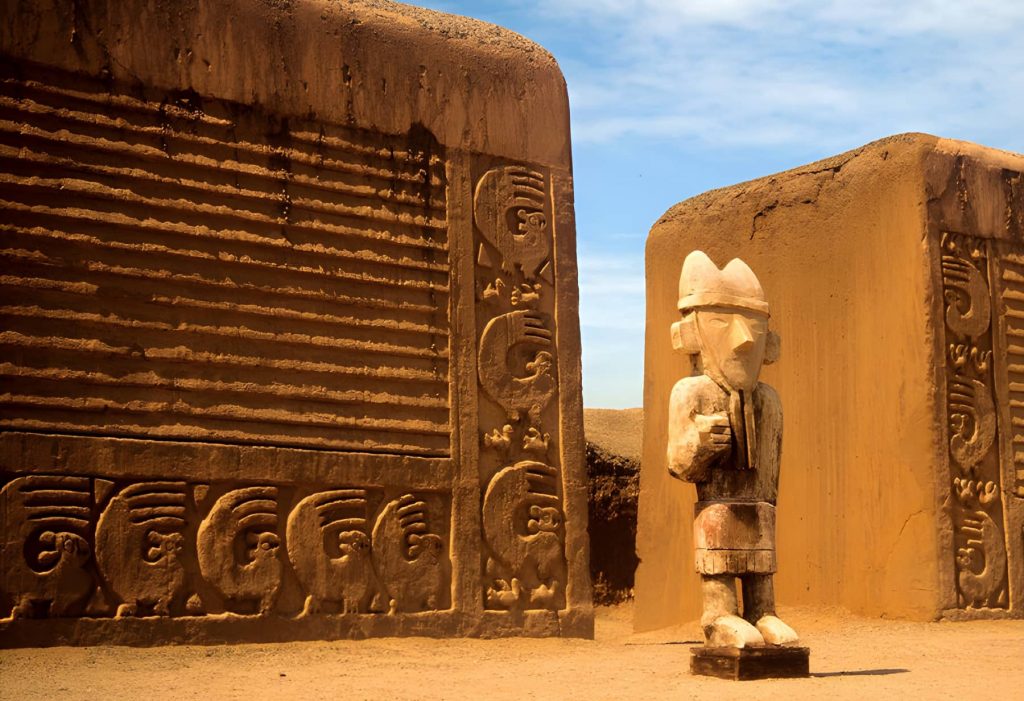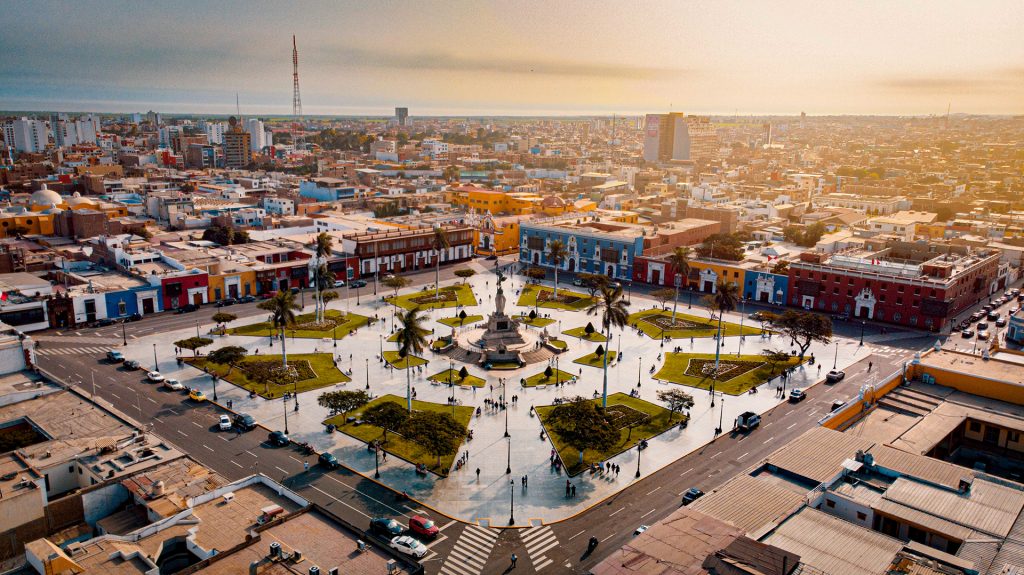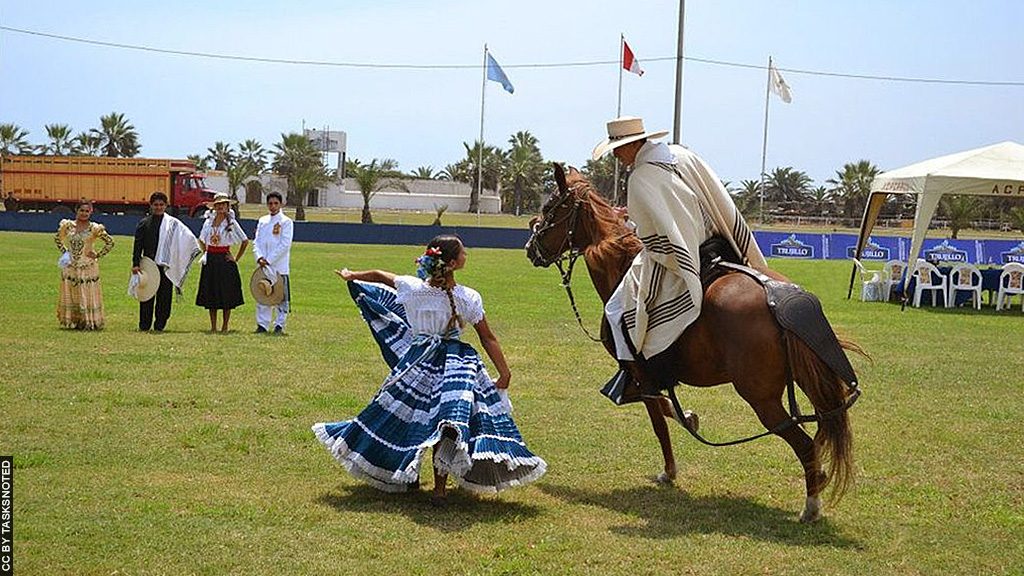We are very proud to say that our country is a land full of culture and different expressions that demonstrate a lot of who we are, our beliefs, history, and worldview. There are several destinations to visit and delve into Peruvian culture, and there are many ways to do so, with activities for all tastes.
Among this diversity of cities and regions to discover is Trujillo, a charming destination that conquers all travelers who arrive there, as it has characteristics that welcome its visitors from the weather conditions to its architecture and tourist attractions.
Trujillo is located in northern Peru known by its nickname of “City of Eternal Spring”, since the heat and sunny days and blue skies are frequent in the region, which gives even more life to the colors of the city’s buildings, making it very charming.
In addition to these aspects, another curiosity about Trujillo involves archaeological aspects. In case you didn’t know, this destination was the birthplace of two civilizations that were extremely important for the development of countless cultures that emerged later. We are talking about the Chimu and Mochica peoples, about which we will address other factors soon.
If you liked what you’ve read so far and would like to know more about Trujillo to get to know Peru beyond the obvious, keep reading and delve into new details about this region. You will surely love to discover more details about this destination which is home to numerous museums, archaeological sites, spectacular architecture, and even festivals!
History in Trujillo and its surroundings
One of the strengths of visiting Trujillo is being able to see up close some of the historic buildings that were marked in these lands and that have resisted the power of time, bringing us closer and giving wings to our imagination to understand what it was like to live in times many centuries ago.
To give you an idea of what we mean when we talk about it, we decided to list here some of the places you need to visit on your trip to Trujillo and, in addition, we are going to tell you some of the most interesting aspects about each of them, going back to the archaeological past. , going through the facts of recent history to the structures that represent the colonial period in the region.
Pre-Columbian City of Chan Chan

For those who didn’t know, we present the largest citadel made entirely of clay in all of the Americas! The citadel of Chan Chan is the result of the work carried out by the Chimu civilization, which took place between the years 1000 and 1470, and which dominated part of the Peruvian coast, being considered the most powerful empire of this pre-Columbian period.
With their great engineering knowledge, the Chimu were able to build Chan Chan, considered their capital. The translation of ‘Chan’ is Sun, however, due to the repeated use of the word there are several interpretations of what it could mean, such as “Burning Sun”, “Big Sun”, among others. And the reference to this name is related to the amount of sunlight received by the citadel.
It is interesting that the entire site is separated into different zones, represented by different architectures. In this way, the people were able to separate their social classes into hierarchies. The city had ceremonial, work, residential and administrative areas.
And every aspect of this city has been in constant transformation, according to the development of civilization. Finally, Chan Chan is known as the largest mud citadel in the Americas because it was built entirely with adobe bricks, that is, bricks made of clay. It is worth exploring every corner of this archaeological site!
Huaca del Sol and Huaca de la Luna

Just as Chan Chan represents a great creation of the Chimu civilization, when it comes to the Moche people we can portray the construction of the Sun and Moon Huacas, which are also located on the outskirts of Trujillo. This archaeological complex was discovered less than 30 years ago, so it has been little explored by researchers.
We can say that, like the Chimu, the Moche also formed one of the most important civilizations on the coast of Peru throughout the 2nd and 5th centuries. The main mark of these people was their ability to develop projects within metallurgy and their great capacity to make ceramics.
Regarding the huacas, they are two pyramids that form different temples. The largest temple of this archaeological site is the Huaca del Sol, considered the administrative center of this culture, whose greatest curiosity about it is that this is the tallest pre-Columbian structure in all of Peru.
The Huaca de la Luna was considered the most important of the two, as it was the Moche ceremonial center, which carries with it much of the cultural expression of these people. In addition to the numerous works and artifacts that adorn the walls of this temple, the place also served as a place of sacrifice to the gods.
Historical Center of Trujillo

As the third-largest city in Peru, Trujillo is also home to, among many other things, one of the most picturesque and beautiful colonial historic centers in the entire country. It received this name from the Spanish city called in the same way.
It is interesting to know that the construction of plaza de armas de Trujillo was facilitated by the interaction of the Spanish conquerors with the Chimu people, who inhabited these lands long before. In addition, this was the first city to become independent from the Spanish crown in all of Peru.
If you are looking for a welcoming city, with wonderful and colorful scenery, and you are thinking of taking the most incredible photos of your trip, it is worth visiting Trujillo and all its instagrammable landscapes! To reach the destination, it is necessary to make a journey of about 9 hours by road from Lima or 1 hour by plane from the Peruvian capital.
Trujillo Museums
As we said earlier, Trujillo has attractions that date back to different periods in Peru’s history, so we couldn’t help but approach some of the city’s main museums so that you can travel back in time to each of them and discover new aspects of history. Peruvian
If you want to know more about the life and routine of the Moche people, there is a museum near the Huacas del Sol e da Lua that could be the right place for you. Called Museo Huacas de Moche, there you can learn more about these aspects and understand more about Mochica architecture.
But if you’re interested in discovering other aspects of the colonial period, Museo Casa de la Emancipación is the ideal place, and you can take the opportunity to walk along Paseo Francisco Pizarro street. While the Museo de Arte Contemporaneo explores the arts in a variety of forms and spaces, such as in gardens, outdoors, and more.
And completely escaping the theme, Trujillo also has the first museum about toys in all of Latin America. Founded in 2001, its collection has items dating back to the pre-Columbian period, belonging to the powerful cultures that inhabited these lands.
Cultural expression in Trujillo

In addition to the historical aspects, Peruvian culture overflows through Trujillo also in other forms of expression, for example, through the festivals that fill the city with joy at certain times of the year.
Among the main ones is the Spring Festival, which takes place between September and October, and which marks the main characteristic for which the city is remembered: spring. This festival uses floats and events such as electing the Queen of Spring also take place during this period.
At the Marinera Festival, there are numerous competitions of Marinera dance, with Peruvian and foreign competitors, and this is a cultural expression marked by different influences, such as colonizers, slaves, and millenary civilizations.
Trujillo is an amazing destination and you can explore it with our Peru packages, which cover the best destinations and the best experiences that the ancient land of the Incas can offer. In addition, you can contact us to answer your questions or plan a journey tailored to your interests!

